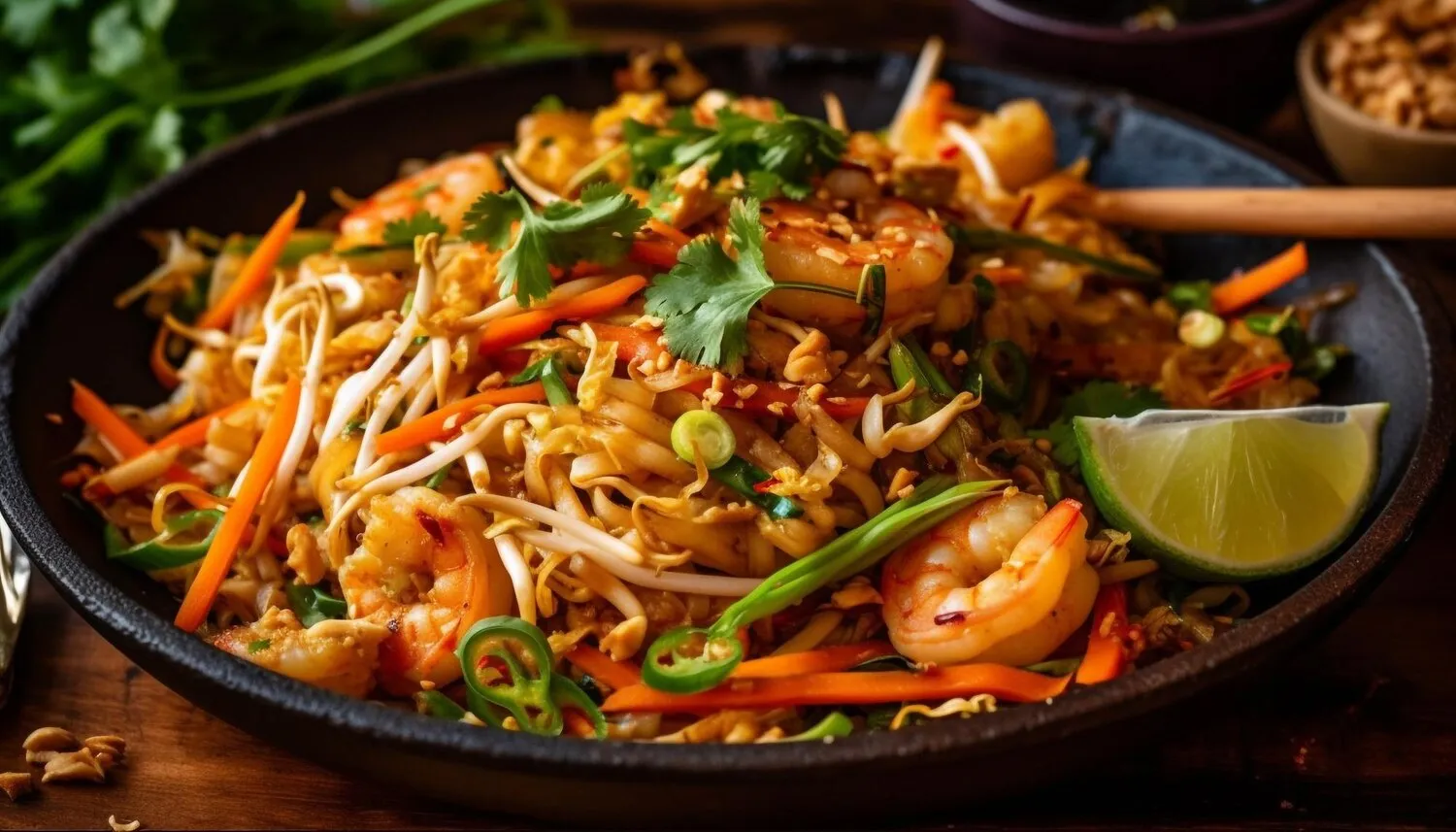
Gebratene Nudeln
Fried noodles with vegetables and a choice of meat (chicken, beef, or shrimp).
Nutrition Facts
* The % Daily Value (DV) tells you how much a nutrient in a serving of food contributes to a daily diet. 2,000 calories a day is used for general nutrition advice.
Noodles have been a staple in Chinese cuisine for thousands of years, with evidence suggesting their consumption dating back to the Neolithic period. Stir-frying, a cooking technique that involves quickly cooking ingredients in a wok over high heat, also has a long history in China. Gebratene Nudeln, as a specific dish, likely evolved as a way to utilize leftover ingredients and provide a quick, satisfying, and nutritious meal.
Gebratene Nudeln, like many noodle dishes in Chinese culture, is associated with longevity and good fortune. Its versatility and ease of preparation have made it a popular dish for both home cooking and restaurant menus around the world.
Longevity Symbolism
In Chinese culture, long noodles symbolize a long life. While Gebratene Nudeln may not always feature exceptionally long noodles, the noodle base still carries this association, especially during birthday celebrations or other significant occasions.
Communal Eating
Gebratene Nudeln is often served as part of a larger meal with multiple dishes, meant to be shared communally among family and friends. This emphasizes the importance of togetherness and harmony in Chinese dining traditions.
Adaptability
The dish is highly adaptable to regional preferences and available ingredients. Different regions in China may use different types of noodles, vegetables, and sauces, resulting in variations of the dish with unique flavor profiles.
Gebratene Nudeln offers a savory and umami-rich flavor profile, balanced with subtle sweetness and salty notes. The dish typically includes a combination of textures, from the tender noodles to the crisp-tender vegetables and the succulent meat or seafood.
The primary flavor components are soy sauce (providing saltiness and umami), oyster sauce (adding depth and richness), sesame oil (contributing a nutty aroma), and ginger/garlic (providing aromatic complexity). The meat (chicken, beef, or shrimp) marinates in soy sauce and ginger/garlic to enhance its savory taste. Vegetables like cabbage, carrots, onions, bell peppers, and bean sprouts bring freshness and a slight sweetness to the dish. The noodles themselves absorb the flavors of the sauce and other ingredients during the stir-frying process.
Noodle Preparation
Cook the noodles al dente, as they will continue to cook during the stir-frying process. Rinsing the noodles with cold water after cooking helps to stop the cooking process and prevent them from sticking together.
High Heat
Use high heat and a wok or large skillet to ensure that the ingredients cook quickly and evenly. This will also help to create a slight char on the noodles and vegetables, enhancing the flavor of the dish.
Ingredient Preparation
Prepare all the ingredients before you start cooking, as the stir-frying process is quick. Chop the vegetables into uniform sizes to ensure even cooking.
Sauce Balance
Adjust the amount of soy sauce, oyster sauce, and sesame oil to your liking. Taste and adjust the seasoning as needed to achieve the desired flavor balance.
Explore additional Noodles dishes and restaurants
Explore NoodlesDiscover top dining spots and culinary experiences in Wels.
Explore WelsLearn more about the food culture, restaurant scene, and culinary heritage of Austria.
Explore Austria